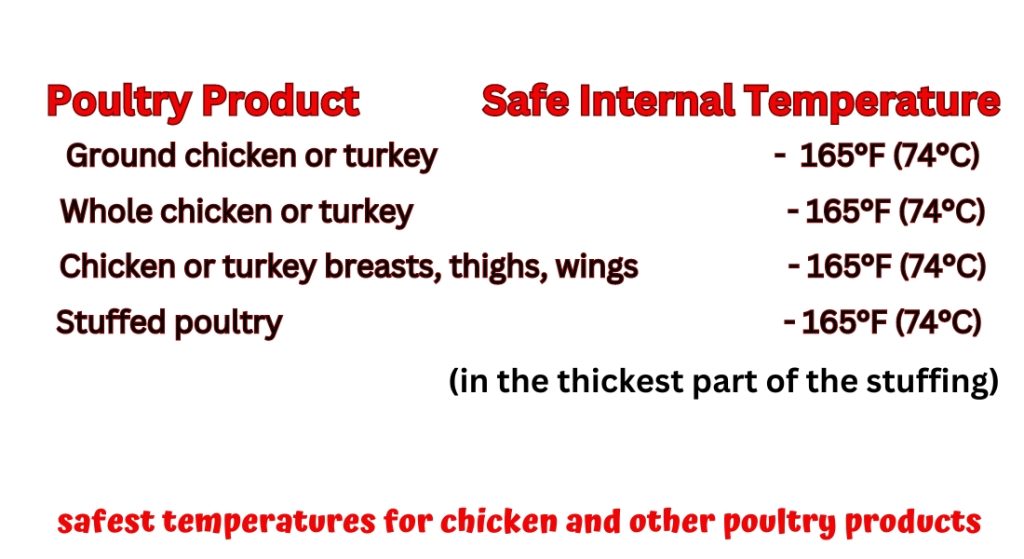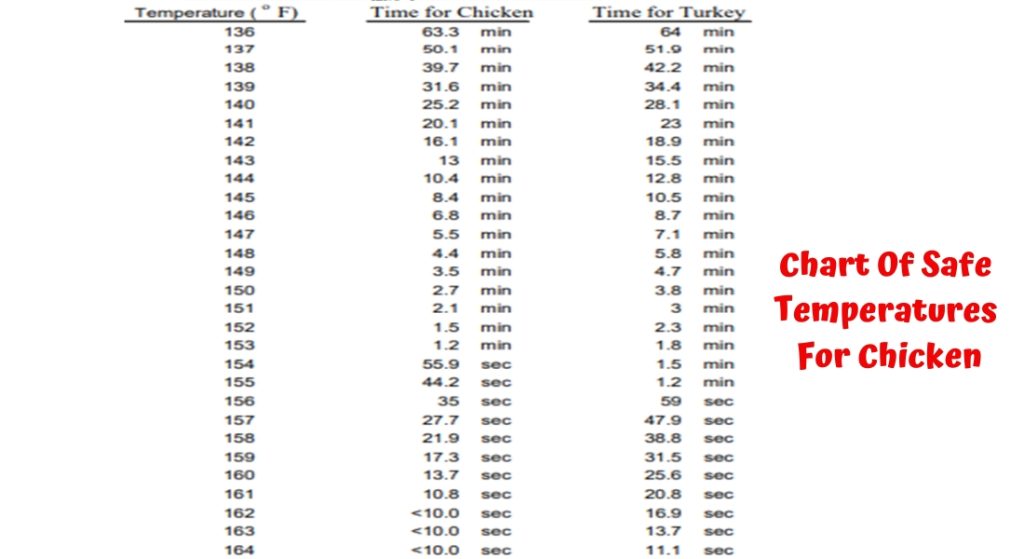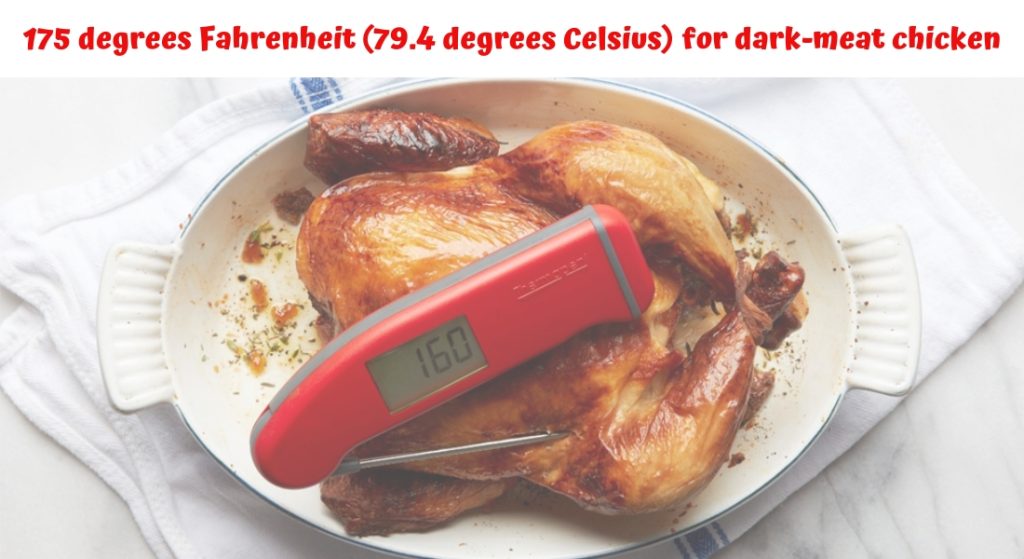Chicken breast is a common and flexible source of protein that is used in many traditional recipes. However using the wrong cooking methods can make chicken dry and overcooked, which is not only unpleasant but also dangerous for food safety. To get perfectly cooked chicken, you need to know and be able chicken breast temperature control.
Our research team has looked into the details of keeping chicken breasts at the right temperature and how those details affect their texture, flavor, and safety. We looked into how cooking methods, time, and temperature affect how tender and juicy chicken breasts are. We also looked at how well different ways of measuring temperature work, making sure that our research are accurate and reliable.
So, follow our guides and stay tuned to last to fulfill your queries!
The Science Behind Chicken Breast Temperature Control
Chicken breast is mostly made up of muscle fibers, and it contains proteins that change shape when heated. These proteins get smaller when the Chicken breast temperature control drops, giving the texture a firm but springy feel.
When the temperature goes up, the proteins break down, making the texture softer and more tender. However being exposed to high temperatures for a long time can make proteins lose too much of their shape, which can make chicken dry and tough.
Rabeler, F., et al. (2019) titled “Prediction of thermal induced color changes of chicken breast meat during convective roasting: A combined mechanistic and kinetic modelling approach recommended” that the colour of the cooked meat, in particular, may be an indicator of the product’s quality, flavour, and safety (Pedreschi et al., 2006).
However, 165°F (74°C) is the best temperature for the inside of a cooked chicken breast. At this temperature, all harmful bacteria are killed, including Salmonella and Campylobacter. This keeps people from getting sick from eating the food. Also, getting the chicken breast to this temperature without overcooking it makes the texture and flavor better.
Here is simple ways chicken breast temperature control from the perspective of a research team:
Temperature Measurement Techniques for Chicken Breast
To make sure the chicken breast is safe and tastes great, it’s important to measure the chicken breast temperature control correctly.
Hasani, E.,et al. (2022) titled “Effect of combination of time and temperature on quality characteristics of sous vide chicken breast” reported that two-step temperature treatment (50 and 60 °C) resulted in better texture parameters (shear force, hardness, chewiness, and gumminess), lower cooking loss, acceptable redness values, and decreased lipid oxidation levels compared to a single temperature treatment (60 °C).
In our research, we’ve looked at a number of different ways to measure temperature, such as:
Food thermometers: These gadgets get the most accurate readings because they measure the temperature inside the meat.
Color-Changing Indicators: These strips change color when the temperature changes. They are a quick but not very accurate way to do it.
Touch Test: Skilled cooks may touch the chicken breast to see if it’s done, but this is a subjective and unreliable way to check.
Safety Questions Regarding Cooked Chicken Temps
Kosa, K. M., et al. (2017) titled “Barriers to using a food thermometer when cooking poultry at home: Results from a national survey” reported that the only certain method of knowing whether or not chicken has achieved an acceptable internal temperature is to use a food thermometer.
To keep food safe and lower the risk of getting sick from food, chicken must be cooked to an internal temperature of 165°F (74°C). Bacteria like Campylobacter and Salmonella can cause serious symptoms like diarrhea, fever, and stomach cramps, but this temperature is high enough to kill them. These diseases can be caused by eating chicken that isn’t fully cooked, so it’s important to follow the right way to cook chicken.
These are some of the safety issues that come up with chicken that isn’t fully cooked:
Bacterial Growth
Bacteria like Campylobacter and Salmonella can grow very quickly in chicken that is not fully cooked. These bacteria can make toxins that make you sick when you eat them.
Foodborne Illnesses
Eating chicken that isn’t fully cooked greatly raises the chance of getting a foodborne illness, which can cause diarrhea, fever, stomach cramps, nausea, and vomiting. In the worst cases, illnesses that are spread by food can make people dehydrated, hospitalized, or even kill them.
Vulnerable Populations
Young children, pregnant women, older adults, and people whose immune systems aren’t strong enough are more likely to get sick from eating chicken that isn’t fully cooked. People in these groups should be extra careful to make sure chicken is cooked all the way through.
To prevent foodborne illness and ensure the safety of cooked chicken, follow these guidelines:
Use a Meat Thermometer
To make sure chicken is cooked all the way through, you should always use a food thermometer. Don’t put the thermometer in bone or fat; instead, put it in the thickest part of the meat.
Cook to 165°F (74°C)
The USDA says that all poultry, including chicken, should be cooked until the internal temperature reaches 165°F (74°C). This will kill any bacteria that could be harmful.
Cook Thoroughly
Make sure that the recommended internal temperature is reached in all parts of the chicken, especially where it is thick and dense.
Avoid Cross-Contamination
Use different cutting boards and tools for raw and cooked chicken to avoid cross-contamination.
Refrigerate Promptly
To stop bacteria from growing, put chicken in the fridge within two hours of cooking it.
If you follow these tips, you can avoid getting sick from food and Enjoy safe and tasty cooked chicken.
First Step Or Beginner: Determine The Temperature Of The Chicken
Here is a simple way to check the temperature of the chicken for beginners:
Needed things:
- A food thermometer
- A clean paper towel
Steps to follow :
- Take the chicken out of the oven or other heat source.
- Use a clean paper towel to dry the chicken.
- The probe should be put into the thickest part of the meat after the thermometer is opened.
- Do not put the probe on bone or fat.
- Put the thermometer away and wait for the reading to stay the same.
- Compare the temperature to 165°F (74°C), which is the safest temperature for the inside.
- Return the chicken to the oven or other heat source if the temperature is below 165°F (74°C) and keep cooking until the right temperature is reached.
- After the chicken reaches 165°F (74°C), take it out of the oven or heat source and let it rest for 5 to 10 minutes. Then you can carve it.
NOTE FOR ADDITIONAL TIPS:
- If you’re testing a whole chicken, put the thermometer into the inside of the thigh, making sure to avoid the bone.
- Put the thermometer in the middle of the patty or nugget of ground chicken.
- Before you use the thermometer and after touching raw chicken, wash your hands well with soap and water.
- It’s important to clean the thermometer every time you use it.
By following these simple steps, you can ensure that your cooked chicken is safe to eat and prevent the risk of foodborne illness. Enjoy your delicious and safely cooked meal!
Is Time and temperature both have an impact on the death of bacteria at 165°f.
Indeed, 165°F is the ideal internal temperature for chicken to kill harmful bacteria like Salmonella and Campylobacter safely. Antibiotics may start to kill bacteria at lower temperatures, but 165°F is the magic temperature that kills enough of them to keep people from getting sick.
Still, it’s important to remember that temperature isn’t the only thing that kills bacteria; time also plays a role. It’s also possible to kill bacteria by keeping chicken at a lower temperature for longer periods. For instance, 145°F-cooked chicken is safe as long as it stays that way for at least 8 minutes.
The safest temperatures for chicken and other poultry products are shown in the table below:

Chart Of Safe Temperatures For Chicken
Here is a chart that shows what temperatures are safe for chicken and other poultry products inside:
To make sure that cooked chicken has reached a safe temperature, it is always best to use a food thermometer to check the temperature inside. Don’t put the thermometer in bone or fat; instead, put it in the thickest part of the meat.

Some more safe ways to cook chicken are listed below:
- Before and after handling raw chicken, wash your hands well with soap and water.
- To avoid cross-contamination, keep raw chicken away from other foods.
- When working with raw chicken, use a clean cutting board and tools.
- Do not let frozen chicken thaw at room temperature.
- You can put it in the fridge, a bath of cold water, or the microwave to thaw.
- Cook chicken all the way through until it reaches 165°F (74°C) on the inside.
- Put leftovers in the fridge right away.
By following these tips, you can help keep yourself from getting sick from food and enjoy safe, tasty chicken.
Cook The Chicken To 157°F And Hold It There As An Intermediate Solution To Dry Chicken
Try this as a middle ground between dry chicken and roast chicken: Get the temperature to 157°F (69°C) and keep it there:
Why Does Chicken Get Dry?
Chicken gets dry when it’s cooked past the point of no return because the muscle fibres lose water.
A few things can cause this to happen, such as:
- Too much cooking: If you cook chicken for too long, it will get dry.
- High heat: Also, cooking chicken over high heat can dry it out.
- Getting dry: Chicken can also get dry if it’s not cooked right, like if it’s not brined or if it’s not left to rest after cooking.
Cook Chicken to 157°F (69°C) and Hold It
This is what you need to cook chicken to 157°F (69°C) and keep it there.
These are the steps:
- Warm the oven up to 150°C/300°F.
- Use your favorite herbs and spices to season your chicken.
- It should take about 20 minutes per pound of chicken to cook in a baking dish, or until the thickest portion of the chicken attains 157°F (69°C).
- Take the chicken out of the oven and let it rest for five to ten minutes before cutting it up.
What Does Holding the Chicken Do?
Holding the chicken makes the juices move around in the meat, which makes the chicken juicier and more flavorful.
Tips for Preventing Dry Chicken
Here are some more ways to keep chicken from getting dry:
- If you want to brine your chicken before cooking it, you soak it in a saltwater solution. This helps keep the chicken from drying out by adding water to it.
- Have a meat thermometer handy. This is the best way to make sure your chicken is cooked to the right temperature.
- Let your chicken rest. Letting your chicken rest after cooking will let the juices move around in the meat, making it more juicy and flavorful.
Additional Notes:
- For breasts, thighs, and wings, this is the best way to cook them. It might not work for whole chickens or stuffed chickens.
- The length of time the chicken is held will depend on its size. A small chicken breast might only need to be held for five minutes, while a large chicken breast might need to be held for ten minutes.
This guide will help you cook chicken that is juicy, tasty, and safe to eat.
Carryover cooking in chicken: thermodynamic thinking
When food is prepared even after being taken away from a heat source, this is called a carryover kitchen. This happens because the heat from the food’s outside layers keeps moving to its inside layers, even though the food isn’t being warmed straightforwardly.
Zeferino, C. P.,et al. titled “Carcass and meat quality traits of chickens fed diets concurrently supplemented with vitamins C and E under constant heat stress” reported that heat stress causes a decrease in feed intake, which is responsible for the negative effects on growth performance and meat colour, as well as negative effects on body composition, greater meat pH, and cooking loss.
To cook chicken properly, you should know this idea: you can take the chicken out of the oven or other heat source before it reaches the recommended internal temperature of 165°F (74°C). Although it is not in the oven anymore, the chicken will keep cooking until it reaches a safe temperature.
A lot of activities affect how much cooking is carried over, such as the chicken’s size, the cooking temperature, and the cooking method. A big chicken breast, for instance, will cook more after being cooked once than a small chicken breast.
More cooking will happen in a chicken that was cooked at a high temperature than in a chicken that was cooked at a low temperature. Also, a chicken cooked in a moist way, like braising, will have more cooking that stays in the meat longer than a chicken cooked in a dry way, like roasting.
The following table shows the cooking times that can be used for different kinds of chicken:
| Type of Chicken | Carryover Cooking Time |
|---|---|
| Small chicken breast (4-6 ounces) | 3-5 minutes |
| Large chicken breast (7-8 ounces) | 5-7 minutes |
| Boneless, skinless chicken thighs | 5-7 minutes |
| Bone-in, skin-on chicken thighs | 10-15 minutes |
| Whole chicken | 20-25 minutes |
You can see that the cooking time for the chicken that was left over goes up as it gets bigger. That’s because a bigger chicken has more mass, which makes it take longer for the heat to move from the outside to the inside.
Benefits of Carryover Cooking
Carryover cooking is a good way to cook chicken for several reasons:
- The most important benefit of carryover cooking is that it keeps food from getting too done: Chicken that is cooked too long is dry and tough, and it can be hard to digest. Take the chicken out of the oven or other heat source before it reaches the right temperature. This will keep it from cooking too much and keep it moist and tender.
- It lets the juices move around: Carryover cooking also moves the juices around inside the chicken, making the meat more flavorful and juicy.
- Cook chicken Safe way: It is safer to cook chicken this way because it makes sure that all of its parts reach a safe internal temperature. This is important because it can get rid of bacteria that can make you sick, like Salmonella and Campylobacter.
Tips for Using Carryover Cooking
Here are some methods you can use to cook chicken using carryover cooking:
- Use a food thermometer to the internal temperature of the chicken. A food thermometer is the safest way to make sure your chicken is cooked all the way through. Don’t put the thermometer in bone or fat; instead, put it in the thickest part of the meat.
- Take the chicken out of the oven or other heat source when it’s 5 to 10°F below the safe line.
- This will let the chicken finish cooking while it’s being cooked in the next pot.
- Wait 5 to 10 minutes before cutting the chicken into pieces.
- The juices will be able to move around in the meat again, making the chicken more flavorful and juicy.
NOTE: When you cook chicken, it’s important to understand the idea of carryover cooking. You can avoid overcooking, make sure your chicken is cooked to the right temperature, and enjoy moist, flavorful chicken by using carryover cooking.
179.4 degrees Celsius for dark-meat chicken
Orta-Ramirez, A., et al. (2002) titled “Thermal inactivation of pathogens and verification of adequate cooking in meat and poultry products” recommended that Thermodynamic inactivation of the most prevalent microbial pathogens in meat and poultry products, as well as the use of thermometers, colour determination, endpoint temperature indicators, and time-temperature integrators to ensure adequate thermal processing.
Dark meat chicken, like thighs and drumsticks, has more soft tissue than white meat, so it needs to be cooked longer to make sure it is safe and falls apart easily. As you can see, the right temperature for dark meat chicken is 175°F (79.4°C).

Following is a list of safe internal Chicken breast temperature control for various types of chicken:
| Poultry Product | Temperature |
|---|---|
| Ground chicken or turkey | 165°F (74°C) |
| Whole chicken or turkey | 165°F (74°C) |
| Chicken or turkey breasts, thighs, wings | 165°F (74°C) |
| Stuffed poultry | 165°F (74°C) in the thickest part of the stuffing |
| Dark meat chicken (thighs and drumsticks) | 175°F (79.4°C) |
To make sure that cooked chicken has managed to reach a safe temperature, it is always best to use a food thermometer to check the temperature inside. Don’t put the thermometer in bone or fat; instead, put it in the central portion of the meat.
Some more safe ways to cook chicken are listed below:
- Before and after handling raw chicken, wash your hands well with soap and water.
- To avoid cross-contamination, keep raw chicken away from other foods.
- When working with raw chicken, use a clean cutting board and tools.
- Do not let frozen chicken thaw at room temperature. You can put it in the fridge, a bath of cold water, or the microwave to thaw.
- Make sure the chicken is fully cooked until the white meat reaches 165°F (74°C) and the dark meat reaches 175°F (79.4°C).
- Put leftovers in the fridge right away.
By using these tips, you can help keep yourself from getting sick from food and relax while enjoying tasty chicken.
Recommendations: Best Cooked Chicken Breast
From our extensive research, here are the best ways to cook chicken breast and measures chicken breast temperature control.
Here are the most important things you need to do to make sure your chicken is cooked perfectly and safe to eat:
Temperature Matter: It’s important to use a food thermometer to check the internal temperature of cooked chicken. This is the safest way to be sure that all parts of the chicken are safe to eat and that all harmful bacteria have been killed.
Safe temps: The ideal internal temperature for most chicken cuts, like breasts, thighs, and wings, is 165°F (74°C). For drumsticks, thighs, and other dark meat chicken, a slightly higher temperature of 175°F (79.4°C) is best to make sure they are safe and tender.
Where to Put the Thermometer: Avoid bone or fat and put the thermometer into the thickest part of the meat. For whole chickens, look at the inside of the thigh.
Resting Time: Give the chicken 5 to 10 minutes to cool down after taking it out of the oven or other heat source. So the juices can move around in the meat again, making the chicken juicier and more flavorful.
Clean: This is very important. Cross-contamination can be avoided by practicing good hygiene. Before and after handling raw chicken, wash your hands well with soap and water. For raw and cooked chicken, use different cutting boards and tools.
Refrigerate Promptly: To keep food safe, put cooked chicken that you don’t want to eat right away in the fridge. Don’t let leftovers sit for more than three or four days.
Avoid Overcooking: Watch the cooking time and temperature to make sure the food doesn’t get too dry or overcooked.
By following these recommendations and utilizing our research findings, you can consistently cook chicken breast to perfection, ensuring a safe, delicious, and enjoyable dining experience.
Remember that if you use a food thermometer and follow these steps, your chicken will be cooked perfectly, safe to eat, and full of delicious flavor.
Have fun with your cooking adventures!
References
- Rabeler, F., Skytte, J. L., & Feyissa, A. H. (2019). Prediction of thermal induced color changes of chicken breast meat during convective roasting: A combined mechanistic and kinetic modelling approach. Food Control, 104, 42-49.
- Pedreschi, F., León, J., Mery, D., Moyano, P., 2006. Development of a computer vision system tomeasure the color of potato chips. Food Res. Int. 39, 1092–1098.
- Hasani, E., Csehi, B., Darnay, L., Ladányi, M., Dalmadi, I., & Kenesei, G. (2022). Effect of combination of time and temperature on quality characteristics of sous vide chicken breast. Foods, 11(4), 521.
- Kosa, K. M., Cates, S. C., Godwin, S., & Chambers IV, E. (2017). Barriers to using a food thermometer when cooking poultry at home: Results from a national survey. Food Prot. Trends, 37, 116-125.
- Orta-Ramirez, A., & Smith, D. M. (2002). Thermal inactivation of pathogens and verification of adequate cooking in meat and poultry products.
- Zeferino, C. P., Komiyama, C. M., Pelícia, V. C., Fascina, V. B., Aoyagi, M. M., Coutinho, L. L., … & Moura, A. S. A. M. T. (2016). Carcass and meat quality traits of chickens fed diets concurrently supplemented with vitamins C and E under constant heat stress. Animal, 10(1), 163-171.
As a 10 years veteran in the culinary industry, I have developed a passion for all things kitchen. With a deep understanding of food preparation and cooking techniques, I am a true kitchen specialist. My experience working in Khedmot kitchen has allowed me to hone my skills and become an expert in creating delicious and visually appealing dishes.
I am a creative and innovative chef, constantly experimenting with new ingredients and cooking methods to bring unique and memorable dining experiences to my customers. In addition to my culinary expertise, I am also highly organized and able to effectively manage a team of kitchen staff, ensuring that all tasks are completed efficiently and to a high standard.
I am dedicated to my craft and always strive to create exceptional dining experiences for my customers. Whether it’s developing a new menu, training my kitchen team, or working with local suppliers, I am always looking for ways to improve and take my kitchen to the next level.
If you’re looking for a skilled and passionate kitchen specialist, look no further. I am eager to bring my expertise to your team and help take your kitchen to the next level.


